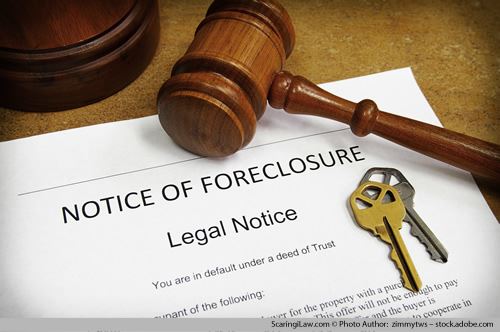If you fall behind on your mortgage payments, it is almost never too late to make a good-faith attempt to keep your home.

America's acute financial crisis may have passed, but banks are still granting strapped borrowers a host of mortgage modifications to ease the debt burden and forestall foreclosure.
Nearly every successful mortgage negotiation begins with borrowers simply requesting a modification by phoning the bank's loss mitigation department.
With this simple notice, the process starts, but these five steps will help you navigate the tricky path.
1. Ducks in a row
People who are months or years behind on their mortgage payments due to a medical situation or job loss that is now resolved, but who are ready to resume mortgage payments, with some debt relief, are prime candidates for a mortgage modification -- even if the bank has begun foreclosure proceedings.
After requesting a modification, the next step is to submit all the paperwork and financial records in the exact order dictated by the bank. Typically, this "mortgage modification packet" is 10 to 20 pages long, demanding tax returns, itemized household budgets, pay stubs, and a hardship letter stating the reasons you need relief.
Often, the bank will ask you to sign various disclosures and releases so they can seek additional personal financial information. The trick is submitting all this information in the correct order so your submission is accepted the first time. Otherwise, your packet could plunge into a cycle of do-overs, with you dealing with a different bank employee each time, forcing you back to Square One.
If the foreclosure clock is ticking, you have no time to waste. A bankruptcy attorney can help, ensuring your packet passes muster the first time and receives all due consideration.
2. Making your case
Perhaps the most important item in your modification packet is the hardship letter. This open-ended narrative statement summarizes your financial situation, beginning with the problems that prevented you from paying your mortgage, and ending with the new circumstances that now enable you to resume payments and remain current.
This single item can make or break your case. It must both touch the heartstrings and reassure wary lenders.
Unfortunately, most clients dread writing such a lengthy letter that could determine the fate of their home and future finances. Skilled attorneys have penned many hardship statements, and know what the bank is looking for.
3. Choosing the right relief
Banks are usually willing to deal in order to avoid months or years of foreclosure litigation. But what type of relief is right for you?
If your goal is to keep the home and resume payments, debt relief and loan restructuring are what you need. In most cases, banks are willing to move the arrears amount to the back of loan, while extending the years the borrower has to pay. As part of this restructuring, the interest rate, along with the monthly payment, may be lowered as well.
For the most part, banks are happy to do this as they will more than make up the difference with the additional years tacked on to the term of the loan. The key is convincing the bank you can keep current.
If your finances prevent you from keeping the home, one debt relief option is a "deed in lieu of foreclosure" agreement. You agree to deed the home to the lender, while the bank forgives past-due payments and remaining loan balances. It is mutually beneficial: the bank avoids foreclosure while you escape liability. If you have equity in the home, the bank may even offer to pay you for returning the deed.
Another form of debt relief that benefits both banks and overwhelmed borrowers is a short sale. This fast-track financial transaction also avoids foreclosure by releasing the original borrower from loan liability as he relinquishes the home for sale to another buyer. The bank quickly sells the dwelling, often at a loss compared to the original loan. But it's still a gain because the house is off the bank's books, and no protracted foreclosure process is necessary. The bank may even convert the new buyer into a loan customer, although many short sale buyers pay in cash.
4. Devil in the details
Whatever form of debt relief or mortgage modification you strike, the details of your restructured loan will be memorialized in a "permanent modification agreement." This binding contract is a complex legal document that should be reviewed by an experienced attorney before you sign.
You don't want to be surprised by a big balloon payment at the end of your modified loan. An attorney can comb through all legal agreements, resolutions and releases.
5. Time is not on your side
Even if foreclosure has been initiated against you, attorneys can pursue mortgage modification and debt relief right up until the date of a sheriff's sale. A final permanent modification agreement effectively halts foreclosure and a sheriff's sale in their tracks -even on the day a sheriff's sale is scheduled. But when your home hangs in the balance, the sooner you act, the better.
